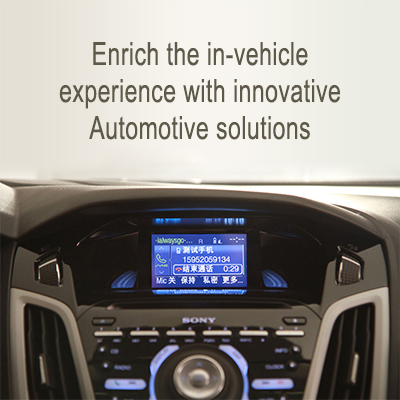From Concept to Consumer: The Evolution of Automotive Design

The evolution of car design has been through a very long way from the image that might have been created in people’s minds regarding the inception of automobiles. From the broad idea to the final production of a car that one sees on the road, there is a series of elaborate steps. Let’s discuss the history of automotive design which is divided into several stages: In this article, every stage will be explained with the help of very simple examples.
1. Concept and Ideation
Early Days: The design of automobiles in certain parts of the beginning period of the twentieth century was more or less a utilitarian affair. The cars where initially made to be strong and the endurance able to last for quite some times. The concept phase was relative uncomplicated and termed more on shapes and forms of various objects.
Modern Approach: Today, the concept phase is much advanced than the above one. Procedures involved designers in the generation of design ideas and concepts such as through conceptualization and drawings. They look at it from standpoints of use, beauty, technology and the trends that customers embrace. Such ideas can be shaped by using useful and powerful software tools that can make them look more tangible before any physical models are produced.
2. Design and Development
Sketches and Models: This is specifically done after choosing a particular model as the concept of a new design where the designers come up with elaborate drawings and miniature building models. These were in the past often hand drawn and manually created. Modern technologies and programs for computer-aided design provide designers with the possibility to make more detailed plans.
Computer-Aided Design (CAD): Computer aided Design or CAD has greatly enhanced the designing of automobiles. This facilitates development of higher precision virtual representations of each part of the car to be constructed. The potential of such models can be calibrated and altered in simulated premises, which makes the process of design more rigorous and faster.
3. Prototyping
Early Prototypes: Early automotive industry indeed had a major of model cars that were handmade with much trials and errors. Each prototype was an embodiment of the design idea and any modification was quite cumbersome.
Modern Prototyping: Present day examples of prototypes include use of sophisticated manufacturing methods such as three dimensional or 3D printing and rapid prototyping. This entails that changes are made and tested much faster. It is also used in this phase with an important function of highlighting problems before manufacturing physical models.
4. Engineering and Testing
Initial Testing: Initially, cars were tested manually and in real-world conditions. This process was time-consuming and often led to numerous iterations.
Advanced Testing: Modern cars undergo extensive testing using advanced technologies. Engineers use simulation software to test everything from aerodynamics to crash safety. Physical tests are still conducted, but they are complemented by virtual simulations that provide detailed data on vehicle performance and safety.
5. Production
Early Production: Early automotive production involved a lot of manual labor. Each car was assembled by hand, which made the process slow and costly.
Modern Manufacturing: Today, production is highly automated. Robotic systems handle many tasks, from welding to painting. This automation ensures consistency and efficiency. Some techniques of production that are employed include lean production and the just in time inventory that is useful in preventing wastes.
6. Consumer Feedback and Iteration
Early Feedback: In the past, the feedback of consumers was gathered through the data available from the sales and through direct contact with the customers. From the above feedback, enhancements were made on other succeeding KIA models.
Contemporary Feedback: Ongoing automobile manufacturers use the internet means such as Facebook, Twitter, online questionnaires, and word of mouth. This feedback procedure is incorporated in creating subsequent model designs and development, to enable manufacturers to achieve faster and efficient consumer needs and preferences satisfaction.
7. Marketing and Launch
Early Marketing: Most of the marketing was done through prints media advertisements and the car shows. The emphasis was put on the demonstration of the car’s characteristics and abilities.
Current Marketing Strategies: Today, marketing is not just through media, technology, and social networks, but through Internet, social networks, and influential personalities. Car manufacturers engage in online presence, virtual campus tours, and aimed online adverts. Many desiring launch events are very consciously staged in order to establish buzz and press interest and anticipation.
8. The Future of Automotive Design
Emerging Trends: The forth coming automobile designs are green oriented technological enhanced and customized. It involves the sale of electric vehicles and the advance of auto driving technology as key factors of the future market. To give it a more efficient outcome, designers are as well considering new materials and ways of manufacturing.
Connected Cars: Another key trend is connected car one that enshrines such components as infotainment as well as connectivity into vehicles. This is made to offer a more customizable driving procedure, and a better compatibility with smart home devices.
Design Philosophy: In that respect, technology is also being infused into the design philosophy. Contemporary automobile design considers the usage, protection, and impact on the environment of the vehicle. The purpose is to design vehicles that have a purpose of a means of transport, beauty and class, viability and edge.
Conclusion:
The process of designing and producing automobiles and the improvements that are seen from the first concept to the final product are in the automotive industry are impressive to consider. The idea was to come up with a concept map which has developed into a complex process that integrates innovation and advanced technology. In the future, therefore, automotive design will go on changing in line with advancing technologies and the shifting needs of consumers so as to continue to enthral the journey from concept to consumer.






